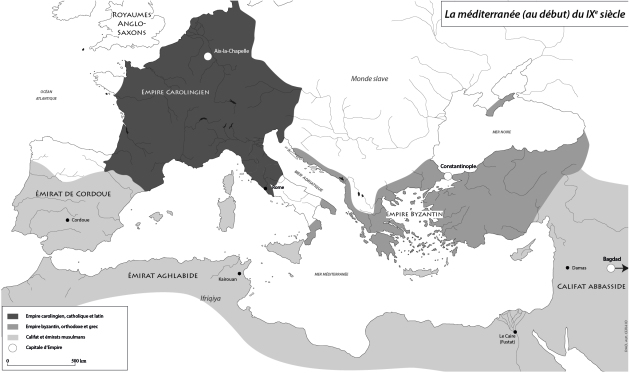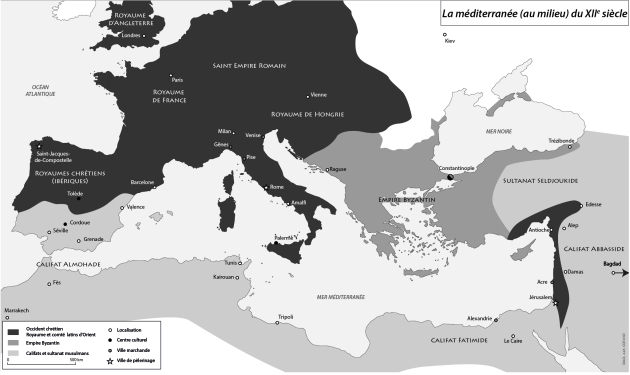Conflicts between Christians and Muslims
Apart from the Arabian Peninsular, the first Muslim forces undertook a series of conquests which took them to the Byzantine (Christian) and Sassanis (Zoroastrian) empires and beyond . In the north, Jerusalem was besieged in 636-637, in the west, conquest proved more difficult in the Nile Delta. Tangier was taken in 711 and, four years later, Muslim soldiers crossed the Pyroxenes from the west after having established their authority in the greater part of the Iberian Peninsula. In 846, part of Rome was sacked by the Muslims coming from Sicily, who were then repelled. From 890, other Muslim troops established fortified camps in the south of Provence, from which they conducted raids and pillage. They were expelled from this region in 973 by nobles from Provence, Vienna and Nice.
A century later, when a schism had divided the Roman and Greek Christians in 1054, the relationship between the forces was partially reversed in the Mediterranean Basin. In 1063, Pope Alexander II[1] made an appeal to Christian knights to join the fight against the Muslims in the Iberian Peninsula. In 1071, the Turkish Muslims were victorious against the Byzantine Christians at Manzikert (Malazgirt). In 1095, Pope Urban II[2] called on the bishops to come to the aid of Eastern Christians who were victims of cruelty in Jerusalem . The conquest led by the Roman Church for two centuries (1095-1291) were later known as the Crusades. The Kingdom of Jerusalem and County of Tripoli were the main Roman centres in the east of the Mediterranean, but they had disappeared by the thirteenth century. In the Iberian Peninsula, on the other hand, the only remaining Muslim Kingdom by that time was Granada.
During this period of confrontation between Christians and Muslims, religious motivation was combined with economic and political aims. In both camps, the enemy was described as the 'infidel' or the 'unbeliever' and justification for vanquishing them was given in the name of faith. This did not prevent alliances between Muslims and Christians against Muslim or Christian sovereigns, nor intra-religious conflicts such as the campaigns led by Saladin[3] against his co-religionists. There were many massacres, such as that in the taking of Jerusalem in 1099. But the religious, political and military authorities nonetheless attempted to establish and follow rules of war, truce and peace.








